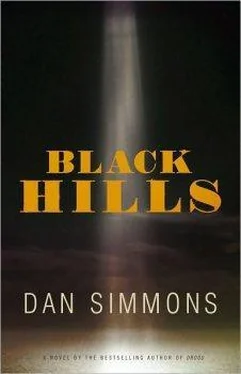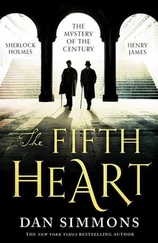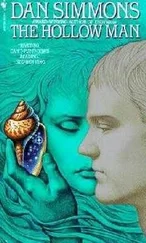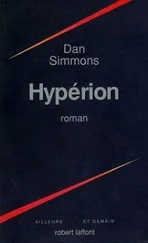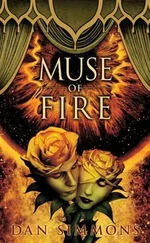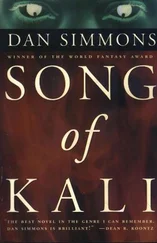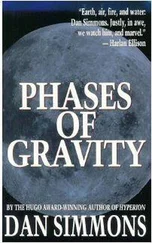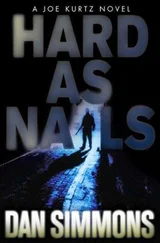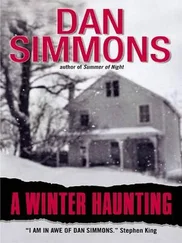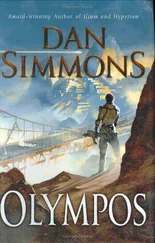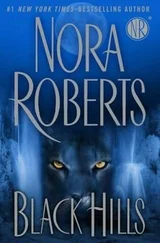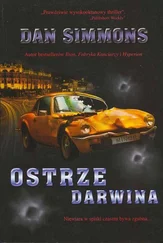— Yes. There are different versions of the story, but in the one my grandfather told me, the flying creatures put on magic colors to help them win the race. Thus the crow first painted himself black, the magpie used white earth and charcoal to make himself wakan—
— Holy. Sacred.
— Yes. The meadowlark trusted in yellow to allow him to win. So the four-leggeds and the two-leggeds, who were all flying creatures then but who agreed to keep their feet on the ground for this Great Race, rushed ’round and ’round the Black Hills a hundred, a thousand times, wearing down the ground there into today’s Race Track. The buffalo and deer were the fastest of the four-leggeds, and the bloody froth that poured from their mouths and noses stained the rock red almost all the way around. They raced through days and nights and weeks and moons.
— Who won?
— Magpie and Crow won, running on behalf of all two-leggeds, including us people who hadn’t yet crawled up through the Breathing Cave. And by then the Race Track was as wide and deep and red rimmed as you see it now. Actually, my grandfather had another name for the red-rimmed oval that surrounds the Wamakaognaka e’cantge.
— What was that, Billy?
—Winyaˇn shan.
— Odd. For all my years recording Sioux words, I’ve never encountered that one. What does it mean, Billy?
— Cunt.
Doane Robinson screws the top on his fountain pen, removes his glasses, and cleans them with the handkerchief from the breast pocket of his thick wool suitcoat. Paha Sapa can see the line of red along the historian’s cheekbone and is sorry that he’s embarrassed the older man.

— Pull over here, please. At that turnout at the base of that column.
Paha Sapa stops the Nash. The dirt road here winds among the Needles—freestanding pillars of granite, some a hundred feet and more tall but most rising forty or fifty feet—and this turnout is to allow motorists to admire this particular fat finger of stone that rises immediately next to the shoulder of the road.
Robinson is fumbling with his new-styled door handle.
— Shall we get out, Billy?
— The wind’s come up, Mr. Robinson. It’s cold out there.
— Come, come. We’re only young once. I want to show you something.
It is colder than Paha Sapa guessed. This part of the narrow road has been cut along the ridgeline, and there are no high peaks in the way to block the freezing wind blasting across the Hills from the northwest. Paha Sapa buttons his black-and-red wool coat and notices the blue-black storm clouds along the horizon far to the northwest. There will be a blizzard rolling in by midnight on this New Year’s Eve. He calculates the time it will take to get Robinson back to his home and to ride back to his own home near Deadwood on the motorcycle. It will not be a night when he wants to be on that narrow, winding mountain road in a blizzard in the dark—especially since the motorcycle has no headlight.
Doane Robinson is gesturing to the Needle column.
— You’ve noticed, Billy, that there are dozens upon dozens—scores!—of these pinnacles within the newly established park.
— Yes.
— And you know of the Black Hills and Yellowstone Highway?
— The Black and Yellow Trail. Sure. We followed the painted bumblebee posts out of Rapid City and up into the Hills.
Paha Sapa thinks of the crude dirt—only occasional gravel—mainauto road that now cuts east and west across South Dakota and that the wasichu grace with the proud name of “highway.” The black-and-yellow-striped roadside posts stretch across the prairie seemingly to infinity.
— The highway connects Chicago to Yellowstone Park and was meant to bring tourists to the West, Billy. South Dakota’s future will depend upon tourism, mark my words. If the economy stays this good, everyone in America will own a car someday and everyone will want to leave those crowded warrens in the eastern and midwestern cities and come out to see the West.
Paha Sapa pulls his collar up against the freezing wind battling them. Doane Robinson’s blush has been replaced with patches of red and white on his cheeks and nose, and Paha Sapa realizes he’ll have to get the historian back in the idling car soon before the intellectual allows himself to get frostbitten. The man’s not even wearing gloves on this subzero day. When an especially vicious gust threatens to tumble Robinson off the frozen dirt of the road down into the underbrush at the base of the granite column, Paha Sapa steadies him with a strong grip on his upper arm.
— Have you ever been to Chicago, Billy?
— Yes. Once.
Paha Sapa can still see Mr. Ferris’s great Wheel rising above the White City at night in 1893, everything bathed in radiance by the thousands of electric lights. The authorities of the Chicago Columbian Exposition had decided that Buffalo Bill’s Wild West Show lacked the proper dignity to be a recognized part of the Fair, so Mr. Cody had set up his show just outside the fairgrounds proper, thus drawing huge crowds while not having to share the profits with the Fair organizers. But the White City, with its huge Electricity Building and Machinery Building—the entire Court of Honor illuminated by those hundreds of electrical streetlights and spotlights through the bustling night—was one of the most amazing things the twenty-eight-year-old Paha Sapa had ever seen.
— You have? Well, you can imagine then why the denizens of that overcrowded town are waiting and wanting to travel west and to breathe our clean air and to see our amazing sights. But South Dakota needs an attraction!
— An attraction?
— Yes, yes. It occurred to me only a few weeks ago that while Yellowstone Park has its geysers and its grizzly bears and its hot springs, certainly enough to bring someone out along the Black and Yellow Highway from Chicago or points farther east, the only attraction that our fair state has to offer the intrepid voyager is the park here in the Black Hills… and all the Hills have to offer are… well… hills.
Paha Sapa can only stare at the state historian. Mr. Robinson’s eyes are watering from the cold and his nose is running copiously. Every time a new gust hits them, only Paha Sapa’s firm grip keeps the larger and older man from being blown down the hill and into the lodgepole pines and Douglas firs that cluster between the bases of the Needles columns. Paha Sapa can see from the shadows thrown that it’s getting late—they will have to leave soon if he has any chance of getting to Deadwood before full darkness falls and the blizzard arrives. The air now smells of the approaching snow.
Robinson extends his free arm and opens his bare fingers in the direction of the granite spire.
— And then it struck me, Billy. Voilà! Sculptures!
— Sculptures?
Paha Sapa can hear how idiotic his repetition sounds, even though he rarely cares how he sounds in so un-nuanced a language as English.
— These spires would be perfect for carving, Billy. I am quite sure that granite is the finest of all carving stone. So a couple of days ago, I wrote this letter to the foremost sculptor in America… perhaps in the world!
Robinson fumbles in his inner pocket, under his blowing topcoat and wind-ballooned suitcoat, and comes out with a carbon copy of a typewriter-typed letter. A gust rips the flimsy paper out of Robinson’s right hand, and only a lightning-fast lunge by Paha Sapa keeps the letter from disappearing forever into the forest.
Читать дальше
